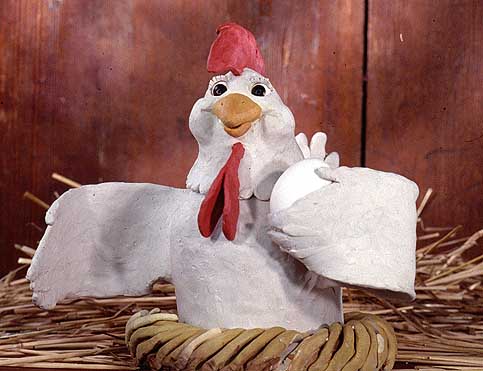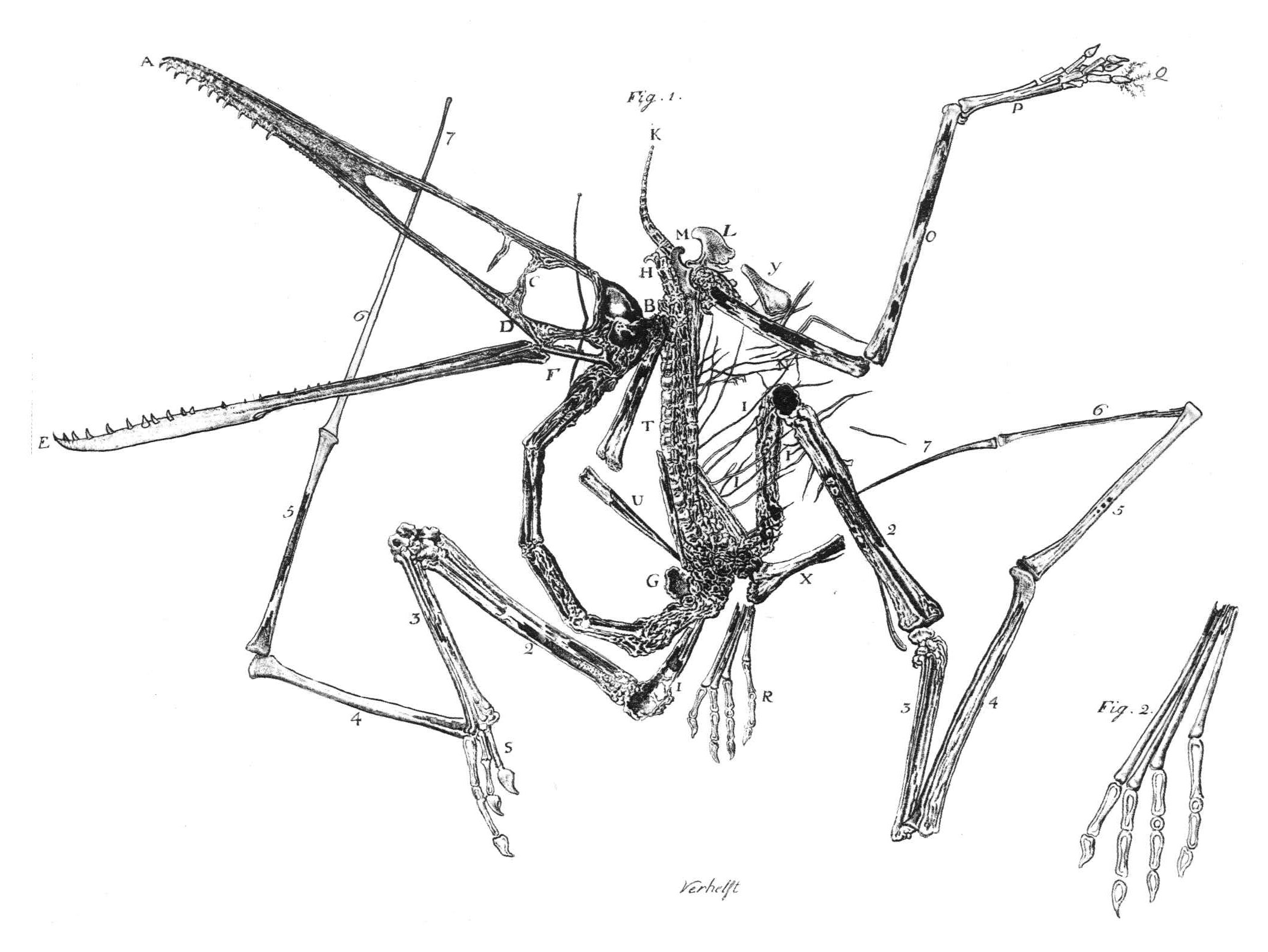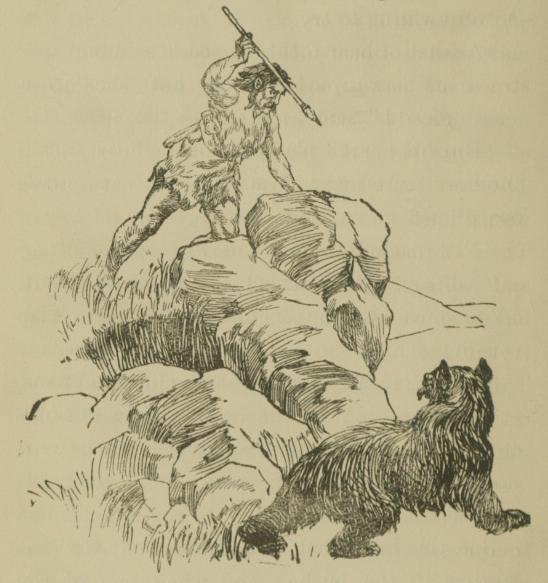|
Rudolph's Shiny New Year
''Rudolph's Shiny New Year'' is a 1976 Christmas and New Year's stop motion animated television special and a standalone sequel to the 1964 special ''Rudolph the Red-Nosed Reindeer'' produced by Rankin/Bass Productions. The special premiered on ABC on December 10, 1976. Plot Just after the events of ''Rudolph the Red-Nosed Reindeer'', Santa Claus receives a letter from his friend Father Time asking for help to find Happy the Baby New Year before midnight ("the 12th bong") on New Year's Eve or else it will be December 31 forever. Santa sends Rudolph out to find him due to the snowstorm currently happening outside. An evil giant vulture named Eon the Terrible is supposed to live for exactly one eon after which he will turn into ice and snow and disintegrate. As this particular eon will end January 1 of the New Year, he plans to kidnap Happy to keep the year from ending and stop time, thus preventing his predestined death. General Ticker (a military clock) and the great Quarte ... [...More Info...] [...Related Items...] OR: [Wikipedia] [Google] [Baidu] |
Romeo Muller
Romeo Earl Muller, Jr. (August 7, 1928 – December 30, 1992) was an American screenwriter and actor most remembered for his screenplays for the Rankin/Bass Christmas specials including ''Rudolph the Red-Nosed Reindeer'', ''The Little Drummer Boy'', ''Frosty the Snowman'', and '' Santa Claus Is Coming to Town''. Early years Muller was born in the Bronx, New York, the son of Mildred (Kuhlmann) and Romeo Earl Muller. He was raised on Long Island. His talents in the arts were evident very early on. At age 11, he became a puppeteer at his grade school and eventually he began writing his own plays. His career in theatre began when he joined an acting troupe called "Theater Go Round" in Virginia Beach, Virginia with producer/friend Lesley Savage. At this time Romeo wrote plays such as ''Angel With The Big, Big Ears'' and ''The Great Getaway'', which eventually became the Rankin-Bass off Broadway play ''A Month Of Sundays''. Since Muller was a big man at 6'2", 300 pounds (1.88 m, ... [...More Info...] [...Related Items...] OR: [Wikipedia] [Google] [Baidu] |
Stop Motion
Stop-motion (also known as stop frame animation) is an animated filmmaking and special effects technique in which objects are physically manipulated in small increments between individually photographed frames so that they will appear to exhibit independent motion or change when the series of frames is played back. Any kind of object can thus be animated, but puppets with movable joints (puppet animation) or clay figures (claymation) are most commonly used. Puppets, models or clay figures built around an armature are used in model animation. Stop motion with live actors is often referred to as pixilation. Stop motion of flat materials such as paper, fabrics or photographs is usually called cutout animation. Terminology The term "stop-motion", relating to the animation technique, is often spelled without a hyphen as "stop motion"—either standalone or as a compound modifier. Both orthographic variants, with and without the hyphen, are correct, but the hyphenated one is th ... [...More Info...] [...Related Items...] OR: [Wikipedia] [Google] [Baidu] |
Fairy Tale
A fairy tale (alternative names include fairytale, fairy story, household tale, magic tale, or wonder tale) is a short story that belongs to the folklore genre. Such stories typically feature magic, enchantments, and mythical or fanciful beings. In most cultures, there is no clear line separating myth from folk or fairy tale; all these together form the literature of preliterate societies. Fairy tales may be distinguished from other folk narratives such as legends (which generally involve belief in the veracity of the events described) and explicit moral tales, including beast fables. Prevalent elements include dragons, dwarfs, elves, fairies, giants, gnomes, goblins, griffins, merfolk, monsters, monarchy, pixies, talking animals, trolls, unicorns, witches, wizards, magic, and enchantments. In less technical contexts, the term is also used to describe something blessed with unusual happiness, as in "fairy-tale ending" (a happy ending) or "fairy-tale romance". ... [...More Info...] [...Related Items...] OR: [Wikipedia] [Google] [Baidu] |
Medieval
In the history of Europe, the Middle Ages or medieval period lasted approximately from the 5th to the late 15th centuries, similarly to the post-classical period of World history (field), global history. It began with the fall of the Western Roman Empire and transitioned into the Renaissance and the Age of Discovery. The Middle Ages is the middle period of the three traditional divisions of Western history: classical antiquity, the medieval period, and the modern period. The medieval period is itself subdivided into the Early Middle Ages, Early, High Middle Ages, High, and Late Middle Ages. Population decline, counterurbanisation, the collapse of centralised authority, invasions, and mass migrations of tribes, which had begun in late antiquity, continued into the Early Middle Ages. The large-scale movements of the Migration Period, including various Germanic peoples, formed new kingdoms in what remained of the Western Roman Empire. In the 7th century, North Africa and the ... [...More Info...] [...Related Items...] OR: [Wikipedia] [Google] [Baidu] |
Knight
A knight is a person granted an honorary title of a knighthood by a head of state (including the pope) or representative for service to the monarch, the church, or the country, especially in a military capacity. The concept of a knighthood may have been inspired by the ancient Greek '' hippeis'' (ἱππεῖς) and Roman ''equites''. In the Early Middle Ages in Western Christian Europe, knighthoods were conferred upon mounted warriors. During the High Middle Ages, a knighthood was considered a class of petty nobility. By the Late Middle Ages, the rank had become associated with the ideals of chivalry, a code of conduct for the perfect courtly Christian warrior. Often, a knight was a vassal who served as an elite fighter or a bodyguard for a lord, with payment in the form of land holdings. The lords trusted the knights, who were skilled in battle on horseback. In the Middle Ages, a knighthood was closely linked with horsemanship (and especially the joust) from its orig ... [...More Info...] [...Related Items...] OR: [Wikipedia] [Google] [Baidu] |
Pterodactylus
''Pterodactylus'' (from ) is a genus of extinct pterosaurs. It is thought to contain only a single species, ''Pterodactylus antiquus'', which was the first pterosaur to be named and identified as a flying reptile and one of the first prehistoric reptiles to ever be discovered. Fossil remains of ''Pterodactylus'' have primarily been found in the Solnhofen limestone of Bavaria, Germany, which dates from the Late Jurassic period (Tithonian stage), about 150.8 to 148.5 million years ago. More fragmentary remains of ''Pterodactylus'' have tentatively been identified from elsewhere in Europe and in Africa. ''Pterodactylus'' was a generalist carnivore that probably fed on a variety of invertebrates and vertebrates. Like all pterosaurs, ''Pterodactylus'' had wings formed by a skin and muscle membrane stretching from its elongated fourth finger to its hind limbs. It was supported internally by collagen fibres and externally by keratinous ridges. ''Pterodactylus'' was a small pteros ... [...More Info...] [...Related Items...] OR: [Wikipedia] [Google] [Baidu] |
Caveman
The caveman is a stock character representative of primitive humans in the Paleolithic. The popularization of the type dates to the early 20th century, when Neanderthals were influentially described as " simian" or " ape-like" by Marcellin Boule and Arthur Keith. The term "caveman" has its taxonomic equivalent in the now-obsolete binomial classification of '' Homo troglodytes'' (Linnaeus, 1758). Characteristics Cavemen are typically portrayed as wearing shaggy animal hides, and capable of cave painting like behaviorally modern humans of the last glacial period. They are often shown armed with rocks, cattle bone clubs, spears, or sticks with rocks tied to them, and are portrayed as unintelligent, easily frightened, and aggressive. Typically, they have a low pitched rough voice and make vocalizations such as "ooga-booga" and grunts or speak using simple phrases. Popular culture also frequently represents cavemen as living with, or alongside of, dinosaurs, even though n ... [...More Info...] [...Related Items...] OR: [Wikipedia] [Google] [Baidu] |
Sperm Whale
The sperm whale or cachalot (''Physeter macrocephalus'') is the largest of the toothed whales and the largest toothed predator. It is the only living member of the Genus (biology), genus ''Physeter'' and one of three extant species in the sperm whale superfamily Physeteroidea, along with the pygmy sperm whale and dwarf sperm whale of the genus ''Kogia''. The sperm whale is a pelagic mammal with a worldwide range, and will migrate seasonally for feeding and breeding. Females and young males live together in groups, while mature males (bulls) live solitary lives outside of the mating season. The females cooperate to protect and Lactation, nurse their young. Females give birth every four to twenty years, and care for the calves for more than a decade. A mature, healthy sperm whale has no natural predators, although calves and weakened adults are sometimes killed by Cetacea#Social relations, pods of killer whales (orcas). Mature males average in length, with the head represent ... [...More Info...] [...Related Items...] OR: [Wikipedia] [Google] [Baidu] |
Archipelago
An archipelago ( ), sometimes called an island group or island chain, is a chain, cluster, or collection of islands. An archipelago may be in an ocean, a sea, or a smaller body of water. Example archipelagos include the Aegean Islands (the origin of the term), the Canadian Arctic Archipelago, the Stockholm Archipelago, the Malay Archipelago (which includes the Indonesian and Philippine Archipelagos), the Lucayan (Bahamian) Archipelago, the Japanese archipelago, and the Hawaiian Archipelago. Etymology The word ''archipelago'' is derived from the Italian ''arcipelago'', used as a proper name for the Aegean Sea, itself perhaps a deformation of the Greek Αιγαίον Πέλαγος. Later, usage shifted to refer to the Aegean Islands (since the sea has a large number of islands). The erudite paretymology, deriving the word from Ancient Greek ἄρχι-(''arkhi-'', "chief") and πέλαγος (''pélagos'', "sea"), proposed by Buondelmonti, can still be found. Geograph ... [...More Info...] [...Related Items...] OR: [Wikipedia] [Google] [Baidu] |
Rudolph The Red-Nosed Reindeer
Rudolph the Red-Nosed Reindeer is a fictional reindeer created by Robert L. May. Rudolph is usually depicted as the ninth and youngest of Santa Claus's reindeer, using his luminous red nose to lead the reindeer team and guide Santa's sleigh on Christmas Eve. Though he initially receives ridicule for his nose as a fawn, the brightness of his nose is so powerful that it illuminates the team's path through harsh winter weather. Ronald D. Lankford, Jr., described Rudolph's story as "the fantasy story made to order for American children: each child has the need to express and receive approval for his or her individuality and special qualities. Rudolph's story embodies the American Dream for the child, writ large because of the cultural significance of Christmas." Rudolph first appeared in a 1939 booklet written by May and published by Montgomery Ward, the department store. The story is owned by The Rudolph Company, LP and has been adapted into numerous forms including Rudolph, the Re ... [...More Info...] [...Related Items...] OR: [Wikipedia] [Google] [Baidu] |
Baby New Year
The Baby New Year is a personification of the start of the New Year commonly seen in editorial cartoons. He symbolizes the "birth" of the next year and the "passing" of the prior year; in other words, a "rebirth". Baby New Year's purpose varies by myth, but he generally performs some sort of ceremonial duty over the course of his year such as chronicling the year's events or presiding over the year as a symbol. History Early known instances of having babies as parts of new years traditions date back to ancient greece. Modern use was popularized at the beginning of the 20th century. Legend The myth most associated with him is that he is a baby at the beginning of his year, but Baby New Year quickly ages until he is elderly (like Father Time, with whom he is often associated) at the end of his year. Very rarely is the Baby New Year depicted as any age other than a baby or as a very old man. Some stories, especially those with depictions of years past, will have him bear a stron ... [...More Info...] [...Related Items...] OR: [Wikipedia] [Google] [Baidu] |
Father Time
Father Time is a personification of time, in particular the progression of history and the approach of death. In recent centuries, he is usually depicted as an elderly bearded man, sometimes with wings, dressed in a robe and carrying a scythe and an hourglass or other timekeeping device. As an image, the origins of "Father Time" are varied. The ancient Greeks themselves began to associate ''Chronos Protogenos'' with the god Cronos, who had the attribute of a harvester's sickle. The Romans equated Cronos with Saturn, who also had a sickle, and was treated as an old man, often with a crutch. The wings and hourglass were early Renaissance additions and he eventually became a companion of the Grim Reaper, personification of Death, often taking his scythe. He may have as an attribute a snake with its tail in its mouth, an ancient Egyptian symbol of eternity. New Year Around New Year's Eve, the media (in particular editorial cartoons) use the convenient trope of Father Time as ... [...More Info...] [...Related Items...] OR: [Wikipedia] [Google] [Baidu] |








